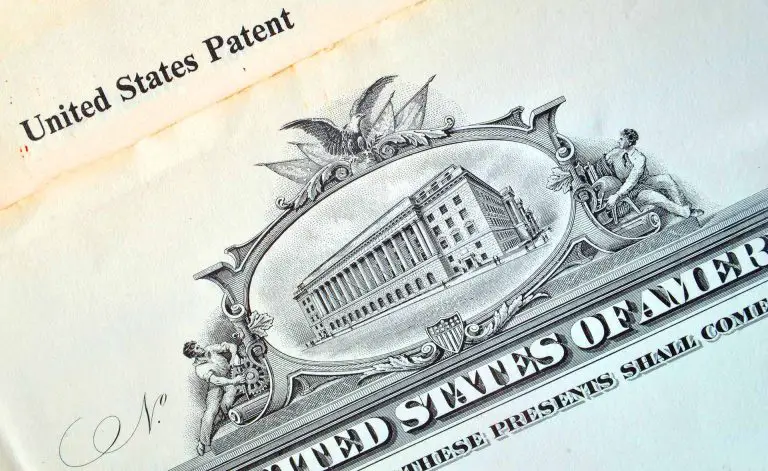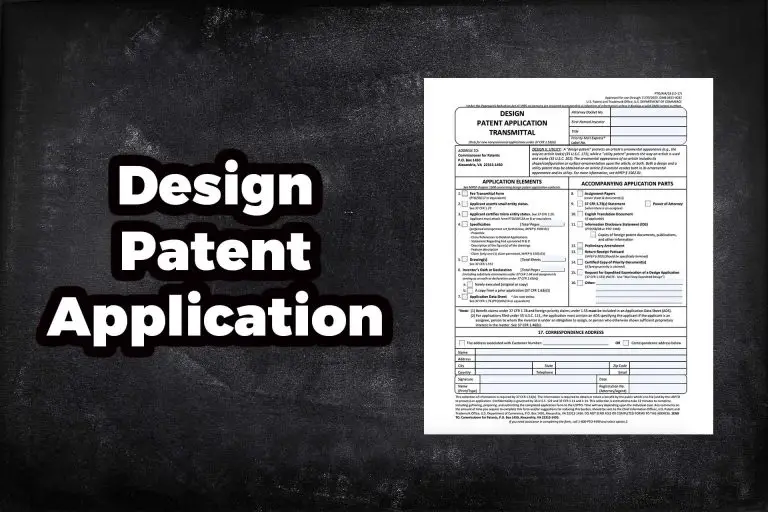Design Patent Functionality
If you have a design that you want to protect, you’ve probably heard that you can only patent a design that is not functional. This is true, design patents can only protect the appearance of your invention, it cannot be used to protect the functional aspect of your invention. If you want to protect the functional aspect of your invention, the correct intellectual property protection is a utility patent and not a design patent. The main goal of this article is to discuss the functionality test for design patents.
Design Patent Functionality Requirement
Design patents protect the new and ornamental features of an article of manufacture. Said differently, design patents protect the appearance of an article or product and how it looks. Patent law does not allow inventors to use design patents to protect the primarily functional elements of an invention.
To be able to patent a design, the design must be separable from the functionality of the article to which the design is applied. Design patents do not cover the article of manufacture itself or its function, instead, design patents are used to protect the appearance of an article or good.
If you have a design that you want to protect, you should use solid lines to identify the design you want to protect and broken lines to indicate the environment of the article that you do not want to protect as part of your design patent. Said differently, broken lines illustrate what an applicant is not claiming as part of the design patent.
If you have to include the environment in which the claimed design is present, you can include it in your patent drawings, but you have to distinguish from the design you want to protect by using broken lines such as those shown in the image below.

In this design patent drawing, the air compressor design is claimed as the invention to be protected and the environment surrounding the air compressor, which is not to be protected is differentiated and pointed out by the use of broken lines.
Design Patent Functionality Test
To patent your design, the inventor must have made a conscious act to create the design to improve the appearance of the product or article of manufacture.
To determine the ornamentality of a design, the courts have asked whether a design is primarily functional and in doing so the court examines the elements of the design as a whole.
For a design to be ornamental, it must have been made for the purpose to improve the appearance of an article or product. It must not have been made to improve the function of an article.
When determining whether a design is primarily functional or primarily ornamental in nature, the design is looked at in its entirety. The design will not be looked at element by element, rather the article is looked at as a whole to determine whether the design actually improves the appearance of the article or whether it really improves the function of the article.
The initial burden to show that a design is not ornamental lies on the patent examiner to provide a prima facie case of unpatentability. The presence of lack of ornamentality must be made on a case-by-case basis.
To support a finding that your design is ornamental, it would help any applicants case to show that the design is something that the end-user of the article would see and notice the design by using the article of product. On the other hand, if the design is hidden during the normal use of the article, the design patent application may be rejected.
Obtaining Both a Design Patent and a Utility Patent
Inventors can obtain a design patent to protect the appearance of an invention and they can also obtain a utility patent to protect the functional aspects of the invention.
When illustrating how a design patent and utility patent can be obtained over the same invention, we always use the nail clipper example. Now to our nail clipper example. You can patent the functional aspects of a nail clipper, such as the hinges or mechanism that allows it to cut nails by using a utility patent and if the nail clippers have a unique handle, you can patent that handle using a design patent.
That said, if you want both design patent and utility patent protection, you need to apply for both patents separately, meaning you’ll need to file a utility patent application and a design patent application.
If you have an invention where the utility and appearance are overlapping and cannot be separated, you should consult with an attorney on how to approach patenting your invention. Your attorney may recommend only filing a utility patent or he may recommend that you seek both types of patent protection depending on your specific circumstances.
Design patents are much easier and less expensive to obtain than utility patents. Utility patents are costly, mainly because of the time it takes an attorney to prepare your patent application. Design patents take a fraction of the time that utility patents take to prepare.
Also, utility patents cost more to file than design patent applications. However, if your design is important to your product because it’s something that your customers consider when purchasing your product, you may want to invest the extra money in patenting the appearance of your invention.
That said, utility patents offer much stronger protection than design patents. This is so because utility patents protect how an invention works, so even if your competitor makes an invention looks different, if it works the same way your utility patented invention works, you will be able to stop them from using, making, selling, and importing your invention to the United States.
Counterfeiters are smart and they do know how to copy your invention without copying its appearance, so if you only have a design patent protecting how your invention looks, you’re out of luck if the counterfeiter changes the way it looks.
But, if you have a utility patent, even if the counterfeiter changes the way your invention looks, you will have a remedy if they copy how your invention works. So, obtaining a utility patent is a very important form of intellectual property protection.
That said, having a design patent is still important, especially if the way your product looks is a selling point for it. So, ask your attorney about obtaining both a utility patent and a design patent. The utility patent protects how your invention works and the design patent will protect how it looks.
Design Patents vs Utility Patents
The basic difference between design patents and utility patents is that design patents protect how your invention looks and utility patents protect how your invention works.
Design patents are much cheaper to obtain than utility patents. It might cost you $2,000 to obtain a design patent, while it may cost you more than $8,000 to obtain a utility patent. However, it should be noted that utility patents protect far more than design patents.
As we mentioned above, it tends to be easier for a bad actor to design around the design of your invention to make a competing product look different than it is for a bad actor to design around the function of your invention. This is why utility patents tend to be a stronger type of intellectual property protection.
That said, design patents tend to have a much lower probability of being rejected by the patent office. Almost all utility patent applications are initially rejected, necessitating the applicant to make changes and/or amendments to the application before it’s approved by the patent office. However, many design patents are approved without ever been rejected.
Benefits of Obtaining a Design Patent
If you patent the design of your invention, you will be able to stop others from using, making, selling, and importing an article that has the design you’ve patented. That said, it is the design patent holder’s job to police his design to ensure that no else is using his design without his permission. The patent office only grants the patent rights to the patent holder, the patent holder is then responsible for enforcing his rights under patent law.
Frequently Asked Questions
1) What is a Design Patent Used For?
A design patent is used to protect how your invention looks. Said differently, it protects the ornamentality or appearance of your invention. You can obtain a design patent by applying using a design patent application.
2) Can You Patent a Design Concept?
You cannot patent a concept or an idea. To patent a design, you must have a design that’s applied to an article of manufacture. You must be able to provide drawings of the design as applied to an object if you want to be able to patent it.
3) What Are the Three Types of Patents?
The patent office offers design patents, utility patents, and plant patents. This article focused on the two most popular patents: design patents and utility patents. As mentioned previously, design patents protect the appearance of an invention, while utility patents protect the function of an invention or how the invention works.
4) How Do You Avoid Design Patent Infringement?
To avoid design patent infringement, the design that you use must be different than any other design that has been issued a patent that is still active. If you have a design that was once patented but is no longer patent, you can use that design without committing patent infringement, however, make sure that the design is not protected by other forms of IP protection, such as copyright law and trademark law.
5) What is an Ornamental Design Patent?
An ornamental design patent is really just a design patent. Design patents protect the ornamental design of an object or how an article looks. All design patents are meant to protect how your invention looks.








